Body & Mind Balance

Healthy Daily Life

Meditation Practice






Your free- source of information, news, and deep dive into the latest science in the world or fitness and health. We dive deep into the literature and debunk a lot of fake claims. Also, providing helpful tips and workouts to improve your health and quality of life.
Majority of people don’t understand the role of insulin and how important it is to the body. Too often, we think insulin is bad for us, and the less insulin we have the better. However, this isn’t true. Sure, insulin’s role is to regulate blood sugar, but this hormone is responsible for more than just glucose regulation.
Glucose spikes aren’t always bad. In fact, depending on your level of physical activity, a glucose spike can quickly replenish your body or help training. Some advanced lifters may recommend consuming candy during or after a work out for this reason.
Insulin is a hormone your pancreas pumps out to manage blood sugar (glucose) and keep your body’s energy system humming. It’s like a key that unlocks cells—mostly muscle, fat, and liver cells—so they can suck up glucose from your bloodstream to use for fuel or store as glycogen or fat. Without it, sugar piles up in your blood, starving cells and screwing up everything from your brain to your toes. However, recent data shows that insulin plays a very important role in brain function and might be an excellent therapeutic compound for treating both obesity and Alzheimer’s disease, as suggested by other contemporaries
Here’s the mechanics: You eat carbs—say, a sandwich. Your gut breaks it down to glucose, blood sugar spikes, and beta cells in your pancreas sense it. They release insulin, which binds to receptors on cell membranes, flipping a switch (via GLUT4 transporters) to let glucose in. Excess glucose gets stashed as glycogen in the liver or fat if the tanks are full. Between meals, insulin dips, and other hormones (like glucagon) pull stored glucose back out.
It’s a tightrope. Too little insulin—like in type 1 diabetes, where beta cells are trashed by an autoimmune attack—means glucose can’t enter cells, leading to high blood sugar, fatigue, and eventually ketoacidosis if unchecked. Too much (or mistimed doses in treatment) drops blood sugar too low—hypoglycemia—causing shakes, confusion, or worse. Type 2 diabetes is trickier—cells get sluggish responding to insulin (resistance), so the pancreas overworks until it burns out.
Beyond sugar, insulin’s a growth signal. It helps build muscle by pushing amino acids into cells and curbs fat breakdown. That’s why it’s tied to weight gain if levels stay high chronically (think processed-carb-heavy diets). Normal fasting insulin’s about 5-15 µU/mL; spikes after meals are fine, but constant elevation flags trouble.
When you eat—especially carbs or protein—insulin spikes. It binds to receptors on muscle cells, triggering GLUT4 transporters to pull glucose in for energy. More crucially for muscle-building, it opens the door for amino acids (protein’s building blocks) to flood into those cells. This ramps up protein synthesis—via the mTOR pathway, a key growth signal—telling your muscles to repair and grow after a workout. Insulin also slams the brakes on protein breakdown (catabolism), so you’re less likely to lose gains between sessions.
But it’s not a free-for-all. Insulin’s anabolic edge peaks with moderate spikes; chronically high levels (from overeating junk) push more glucose to fat storage than muscle, especially if you’re not lifting. Timing matters—pre- or post-workout doses (natural or injected, for some) amplify uptake when muscles are primed. Bodybuilders sometimes exploit this with insulin injections, but that’s risky—hypoglycemia can hit fast, and it’s illegal without a prescription.
This doesn’t mean we should avoid carbohydrates, and in turn, focus on healthy carbohydrates and fiber. Also known as low-glycemic carbohydrates, it’s important to consume a proper balance diet of proteins, carbohydrates, and fatty acids.
Saturated fat and insulin resistance have a complicated relationship—there’s a link, but it’s not a straight shot of cause-and-effect. It hinges on how much you eat, what else is in your diet, and how your body handles it. Let’s break it down.
Saturated fat—think butter, red meat, coconut oil—is a type of fatty acid with no double bonds, making it solid at room temp. It’s been flagged as a potential player in insulin resistance, where cells stop responding well to insulin, forcing your pancreas to pump out more to keep blood sugar in check. Over time, this can lead to type 2 diabetes if the system buckles.
Too much saturated fat can mess with cell membranes, making them less flexible and gunking up insulin receptors—think of it like rust on a lock. Studies (e.g., Diabetes Care, 2001) show diets high in saturated fats (over 10-15% of calories) raise blood levels of fatty acids, which can trigger inflammation via cytokines like TNF-alpha. This low-grade inflammation stresses cells, especially in fat tissue and the liver, dulling insulin’s signal. Excess fat can also pile up in muscles and organs (ectopic fat), further clogging the works. Substitution of unsaturated fat for saturated fat not only reduces LDL cholesterol but contributes also to reduce plasma triglycerides in insulin resistant individuals. There is evidence available in humans indicating that dietary fat quality influences insulin sensitivity and associated metabolic abnormalities. Therefore, prevention of the metabolic syndrome must be targeted to correct overweight by reducing the energy density of the habitual diet (i.e., fat intake) and to improve insulin sensitivity and associated metabolic abnormalities through a reduction of dietary saturated fat, partially replaced, when appropriate, by monounsaturated and polyunsaturated fats.
Quantity’s key. Small amounts (say, 20-30g daily from whole foods) don’t seem to tank insulin sensitivity in active people. Pile on 60-100g daily—especially with sedentary habits—and you’re courting trouble, especially if carbs are high too. A 2020 study in Cell Metabolism showed overfeeding saturated fats for weeks spiked insulin levels 20-30% more than unsaturated fats, hinting at resistance creeping in. A typical ribeye (say, 8 oz) packs about 20-25g of saturated fat
For muscle-building, this matters—insulin resistance could blunt nutrient uptake, slowing gains. Keep saturated fat moderate (under 10% of calories, per most guidelines), balance it with poly- and monounsaturated fats, and time carbs around workouts to keep insulin humming efficiently. The Journal of Clinical Investigation (2009) show excess saturated fat can pile lipids in muscle cells within days, dulling insulin’s ability to shuttle glucose and amino acids. For your gains, that’s a bottleneck—less efficient nutrient delivery post-workout.
Not all doom, though. Steak’s protein (25-30g per serving) spikes insulin naturally, offsetting some resistance short-term by forcing glucose uptake. Active muscle from lifting also burns through glycogen, keeping sensitivity decent—sedentary folks fare worse. The catch? Chronic overload could still tip the scales, especially if carbs are low (keto-style) or sky-high (steak-and-potatoes life).
Check out our other topcis

Cocoa Powder might be a great addition to your diet to improve your health. Cocoa contains polyphenols, which are naturally occurring antioxidants. Cocoa also contains flavanols, and data shows that flavanols can reduce inflammation.